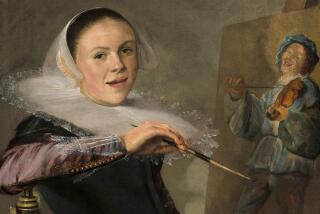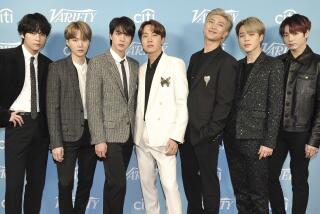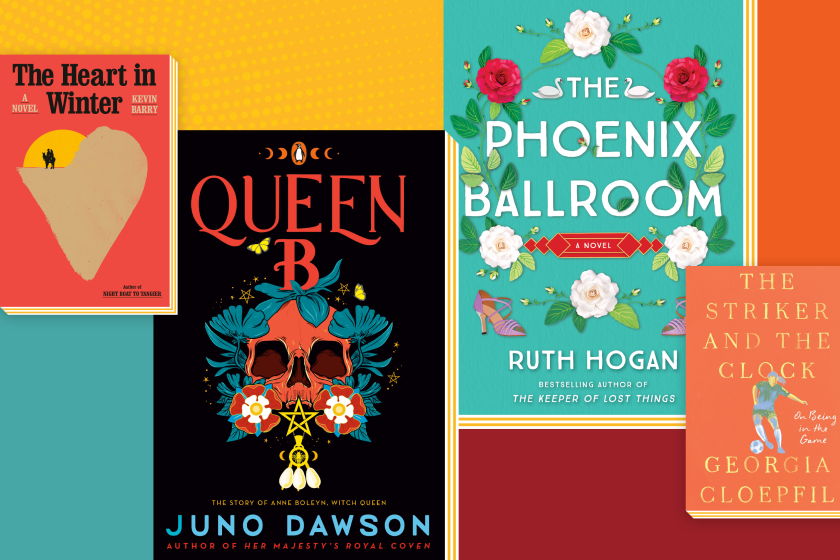Popular Stories Open the Door to Learning Games for Kids
GAMES WITH BOOKS
28 of the Best Children’s Books and How to Use Them to Help Your Child Learn--From Preschool to 3rd Grade
By Peggy Kaye
Farrar, Straus & Giroux
256 pages; $16
Of the myriad factors that affect a child’s potential to excel in school, two of the most influential are whether the child is read to on a regular basis and whether the child has access to good books. Children who develop an early passion for reading, almost as a rule, go on to meet or exceed educational expectations.
Talk to adults who are avid readers and most will fondly remember being read to as a child. What can compare to facing one’s greatest fears while cuddled in the lap of an adult? Together, with an older, comforting presence, children explore the monster within by reading Maurice Sendak’s “Where the Wild Things Are,” they encounter and overcome the wretched teacher Mrs. Trunchbull in Roald Dahl’s terrifyingly delightful “Matilda,” face their fears of being lost in a dark forest with A.A. Milne’s “Winnie-the-Pooh” and consider the problems of being tiny in a big person’s world in E.B. White’s “Stuart Little.”
“Games With Books” is a how-to volume for getting the most educational bang for your reading-time buck when it comes to children. The text joins the ranks of the seminal “Read-Aloud Handbook” by Jim Trelease and provides food for thought regarding what children learn from time spent with books. Written and illustrated by Peggy Kaye (“Games for Writing,” “Games for Learning”) the book is divided into two sections: “How to Play With Picture Books,” designed for those working with preschool through first-grade children, and “How to Play With Chapter Books,” for use with older children, up to third grade.
Kaye has selected 28 of the most-loved children’s books as the basis for her games, relying heavily on classics such as Dr. Seuss’ “The 500 Hats of Bartholomew Cubbins,” E.B. White’s “Charlotte’s Web” and Crockett Johnson’s “Harold and the Purple Crayon.” There are a few recent titles--Susan Meddaugh’s 1996 “Martha Blah Blah,” for example--but most are long-standing favorites.
Though the author stresses the importance of reading to children, her focus is primarily on how to extend the reading experience to help them develop basic skills in math, writing, creative thinking and problem-solving.
For example, using Michael Bond’s “A Bear Called Paddington,” she demonstrates ways to springboard off the story. Paddington the bear shows a knack for getting himself into sticky situations and in one key scene uses shaving cream to write on the bathroom mirror. Kaye, who works as a private tutor with young children struggling in school, invents a game to help Billy, a boy who refuses to write.
After reading “Paddington” to him, she sprays shaving cream onto a large baking tray and encourages Billy to form letters and words in the cream. This child, who hates writing when it involves pencil and paper, is more than willing to try the shaving cream method.
Kaye re-creates her experience with Billy, showing us how to do similar things with our children. After Billy forms a number of words, though, his interest begins to wane. Not to worry. Kaye sparks his continued fascination by adding food coloring to the cream. Soon he’s writing words in red, then adding yellow and learning about making new colors.
Once he develops confidence in his ability to make words in the cream, he’s more willing to try the same thing on paper. In similar ways, Kaye encourages parents and teachers to make applesauce, speak a version of pig Latin and play charades.
Unfortunately, the authorial tone Kaye employs is overly simple and, at times, a bit worrisome. She reminds readers regularly, for instance, that children need help to be imaginative and that parents often require assistance to know how to play with them.
If these statements are accurate, and they well may be, they raise huge concerns about our society and parenting. Plus, her emphasis in this book on reading as a tool leading to other forms of learning, though pragmatic, downplays the sheer joy to be found in reading for pleasure.
Perhaps Kaye’s background working with problem learners skews her approach so that each reading experience is seen as a tool to solve other issues--getting a child to count, to recognize letters of the alphabet--rather than as a delightful exploration into a child’s natural curiosity.
The games Kaye presents are creative and will aid parents and teachers who wish to use reading time as a tool to other forms of learning. The hazard, though, is that we might mistake the means for the ends.
Engendering a love of books--reading as pleasure--is something to be celebrated in its own right. With games or without, simply reading with children is still one of the most effective educational tools available.
More to Read
Sign up for our Book Club newsletter
Get the latest news, events and more from the Los Angeles Times Book Club, and help us get L.A. reading and talking.
You may occasionally receive promotional content from the Los Angeles Times.






